These are the natural monuments you really must visit in Spain's Andalucía region
Mountains, canyons, coastlines, geological formations or important enclaves for fauna dispaly the richness of Andalucía's heritage
R. Pérez
Almeria
Friday, 16 May 2025, 00:54
Spain's Andalucía region has 60 natural monuments, protected spaces or elements of enormous natural, geological or cultural value. They range from mountains, canyons and coastlines to geological formations, habitats and other sites of archaeological or historical interest.
Below, we have listed some of them, making sure we cover all of the region's provinces, so that you can visit them and learn a little more about the authenticity of the Andalucía. The conservation of these natural monuments requires that society supports the efforts by following all the guidelines during a visit.
GEODA DE PULPÍ (ALMERIA)
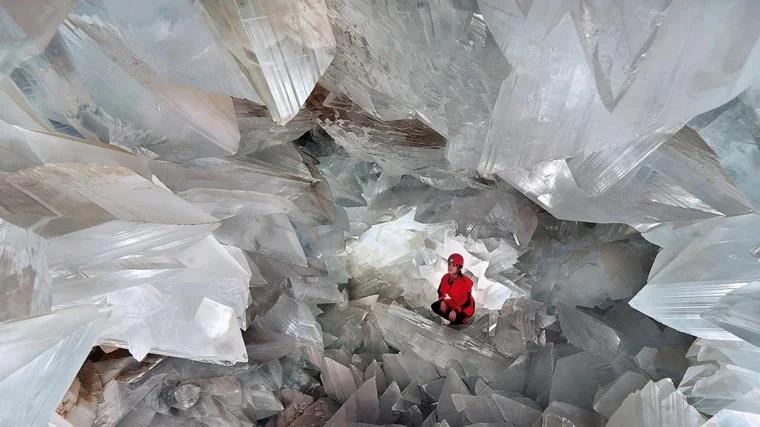
Located in Mina Rica in Pulpí, in the eastern section of the Baetic mountain range and at the foot of the Aguilón mountain range, this giant, eight-metre-long and two-metre-high geode is covered with enormous gypsum crystals, making it a unique geological heritage site worldwide. Its transparency and state of conservation make it a jewel of nature. In fact, it is considered to be the second largest in the world, after the Cueva de los Cristales in Chihuahua (Mexico) and the first one that can be visited.
Access to this natural monument is through the A-1205 road from Pulpí to San Juan de los Terreros, using the roundabout between kilometre points 9 and 10. The visitor reception centre is quite visible and well-signposted. There is also a car park.
The visits are always conducted with specialised guides, who explain the unique geology of the site and the technical aspects of mining. Reservations can be made online through the official website www.geodapulpi.es.
DUNA DE BOLONIA (CADIZ)
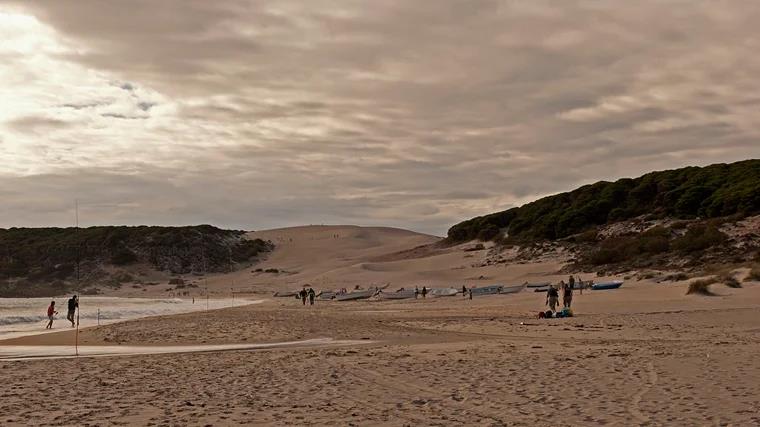
The Duna de Bolonia is an active dune, more than 30 metres high and 200 metres wide, located in the Bolonia cove, in the Parque Natural del Estrecho. It is one of the least transformed areas of the Cadiz coast, with important natural and scenic values.
Access is achieved through the N-340. At kilometre 71, take the CA-8202, which takes you to Bolonia. Once there, take the right turn, until you cross the Alpariate stream, where you will find the start of the Duna de Bolonia signposted path.
This natural monument is located next to the archaeological complex of Baelo Claudia and is an example of integration between the natural and cultural heritage of Andalucía. The dune has been forming over thousands of years as a result of the easterly wind and sea currents.
MEANDRO DE MONTORO (CORDOBA)
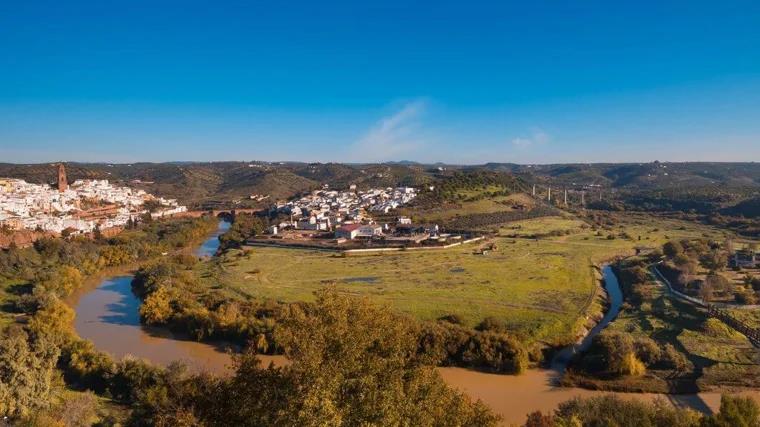
The Meandro de Montoro extends along a 4.7-kilometre-long stretch of the Guadalquivir river, as it passes through Montoro, where it leaves the soft quaternary and tertiary soils of the countryside to cut through and dominate the rock formations. This phenomenon is known as epigenesis.
To visit this natural monument, take the A-4 motorway from Cordoba, taking the exit to Montoro. From the town center, you can head toward the right bank of the river from the Doncellas Bridge, in the direction of Adamuz. Once there, continue up to the Berrocal house, and halfway along the route, you'll find a viewpoint where you can admire the meander.
PEÑA DE CASTRIL (GRANADA)
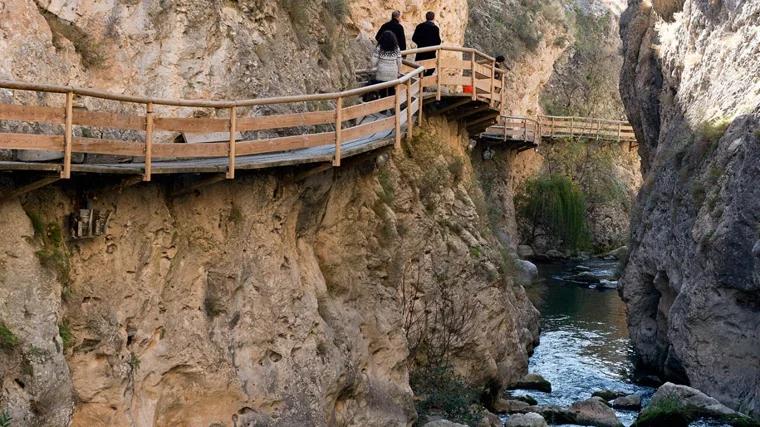
The Peña de Castril is a site of notable uniqueness and historical, geological, and scenic value, and it also holds significant local importance. The village is also known as Castril de la Peña and the entire historic site was declared an asset of cultural interest in 2001.
It is annexed to the village itself and has an amazing viewpoint from where you can see a wide panorama of the Castril mountain range and its surroundings. At the foot of the protected area, the Castril town hall has designed the Cerrada path, which runs around the natural monument for a distance of just under 2 kilometres.
The path can be started from the Plaza Hernando de Zafra, where the town hall is located. You can walk down to the river to begin a striking section of hanging walkways anchored to the rock above the river canyon. The start of the Cerrada trail can also be accessed from the Arboleda Perdida park, which can be reached by car.
ACANTILADO DEL ASPERILLO (HUELVA)
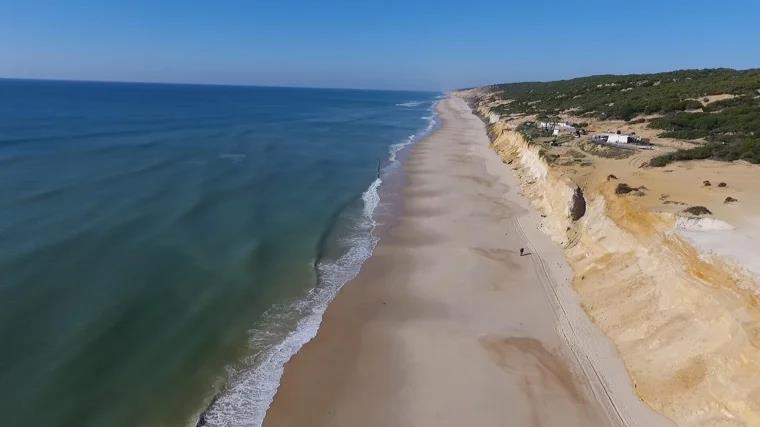
In Almonte, between the towns of Matalascañas and Mazagón, following the Cuesta Maneli path and on Matalascañas beach, is Acantilado del Asperillo - a system of fossil dunes that extend along twelve hectares of coastline. It is the highest cliff of its kind in Europe.
It can be accessed from the A-494 road or the El Asperillo cycle path. The Cuesta Maneli signposted path (A-494, kilometre 39) has adequate infrastructure to overcome the slope and descend to the beach; while the Laguna del Jaral signposted path (A-494, between kilometres 46 and 45) features a sandy substrate and a moderate incline in some sections. Both trails pass through the fossil dune complex until they reach the cliff.
The Asperillo is located in the privileged setting of the Doñana Natural Park. Going to the cliffs to contemplate the landscape or bathe in one of its beaches are some of the options for enjoying this protected natural area. Its high scenic value has made it a regular backdrop for audiovisual productions.
CUEVA DEL AGUA DE TÍSCAR (JAÉN)
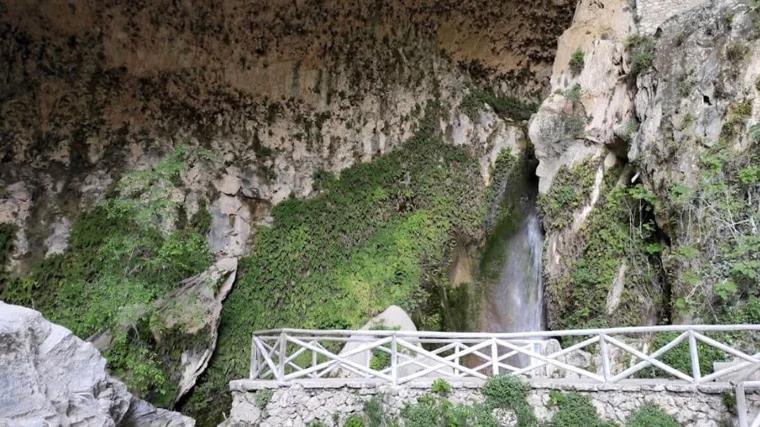
Cueva del Agua de Tíscar is a large limestone vault, with stalactites and stalagmites, in a gorge where the river Tíscar flows down forming pools and waterfalls, among which a 20-metre waterfall stands out. There is a legend surrounding the appearance of the statue of the Virgin of Tíscar that dates back to a battle in 1319 between Christians and Muslims.
To reach it, take the A-6206 road between Quesada and Pozo Alcón, up to kilometre 47.7. There is nearby parking available. Just before entering the cave, visitors must crouch slightly to pass through a small tunnel, approximately 12 metres long. The site features viewpoints, railings, and walkways, but it is not suitable for people with reduced mobility.
The signposted trail 'Cueva del Agua de Tíscar' connects the sanctuary of Tíscar with the water cave. You can also visit the Cueva del Agua de Tíscar viewpoint, which is accessed by climbing more than a hundred steps.
FUENTE DE LOS CIEN CAÑOS (MALAGA)
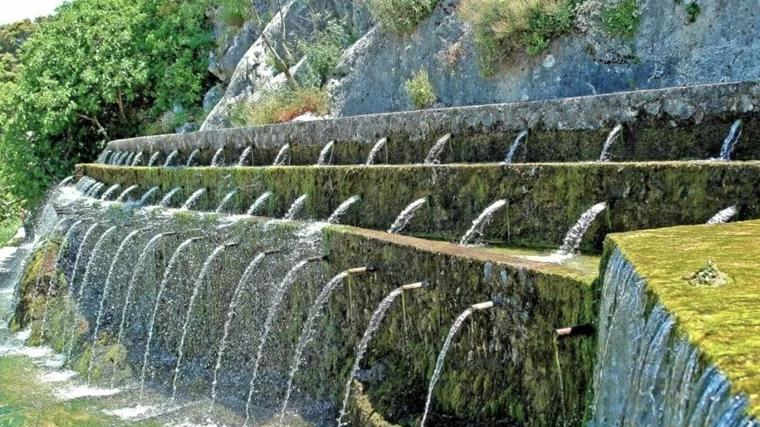
Fuente de los Cien Caños-Nacimiento del Río Guadalhorce in Villanueva del Trabuco is located on a limestone hillside with countless springs that drain the Sierra de San Jorge, in the Antequera area of Malaga province. The water flows through two almost vertical walls, from where it is channelled by a spring with 101 spouts, attached to the rock, and collected in the lower part by irrigation channels.
There are several trails approved by the Andalusian federation of mountain sports, climbing and hiking, which run through the area, such as the PR-A 339 Sendero de los Cien Caños short-distance trail, which starts at the natural monument and follows an interesting circular route which allows you to discover its natural environment and ethnographic heritage, through unique farmhouses and old mills.
Next to the Fuente de los Cien Caños, the path opens out onto a large esplanade with car parks, where there is a recreation area with wooden tables and benches to rest and have something to eat.
CASCADAS DEL HUÉZNAR (SEVILLE)
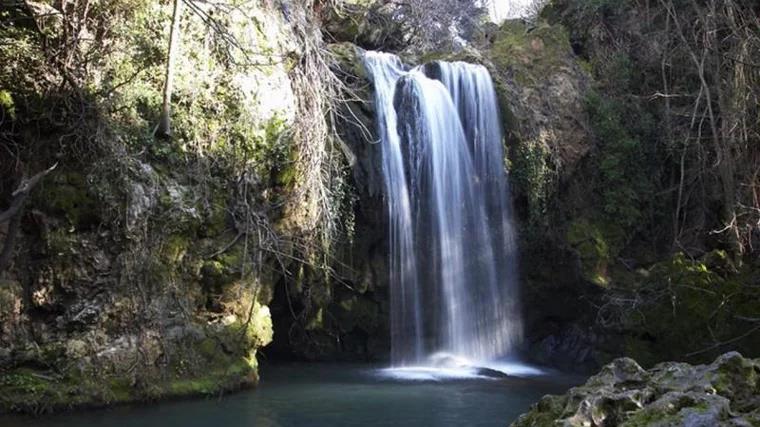
Cascadas del Huéznar consists of a series of waterfalls that arise when the river of the same name cascades over some peculiar limestone formations, known as travertines. It is located in the municipality of San Nicolás del Puerto. This riverbank, which is one of the most emblematic and best preserved in the Sierra Norte de Sevilla natural park, offers an idyllic landscape, brimming with freshness and richness.
Along this succession of small waterfalls, called Las Chorreras, the crystal-clear river flows under a spectacular gallery forest full of willows and ash trees. Bathing is forbidden in the waterfalls. Upstream from the monument, is the so-called San Nicolás beach - the only place where bathing is allowed.
The Cascadas del Huéznar can be reached via the Sierra Norte greenway - an old railway line that has been adapted for use on foot or by bicycle.
